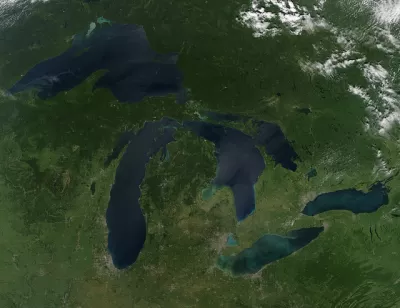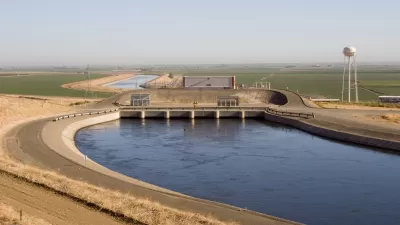The city of Waukesha asked for more water than the Great Lakes Compact would allow. Commenters remind the city of Waukesha that water for growth was never the goal of the Great Lakes Compact.

Don Behm of the Milwaukee-Wisconsin Journal Sentinel provides the big news about a decision by Great Lakes officials to cut a water diversion request intended to help the city of Waukesha, a suburb of Milwaukee, continue to grow. According to Behm, Waukesha's proposal requested an average of 10.1 million gallons a day. Great Lakes official trimmed that proposal to 8.2 million gallons a day by removing "portions of three neighboring communities from a future water service area to receive lake water," according to Behm.
An article by Angie Schmitt offers helpful perspective on the context and larger implications of the decision. "Governors of the states surrounding the Great Lakes are considering a water policy case with big implications for land development throughout the Midwest," writes Schmitt, who also provides this background:
Waukesha, Wisconsin, a sprawling suburban area outside Milwaukee, has exhausted its water resources. Rather than cooperate with the city of Milwaukee to secure water, Waukesha spent years preparing an application to divert water from Lake Michigan. Waukesha needs permission from the states and provinces that signed the Great Lakes Compact, a 2008 agreement to protect the world’s largest freshwater source from being pillaged.
In addition to providing that concise description of the issue, Schmitt's article shares the commentary provided by James Rowen of the Political Environment, who has been following the request since it was first proposed. According to Rowen, a recent decision by Great Lakes officials to cut the water diversion request should have been anticipated years ago.
Prior to the regional group's decision, the Wisconsin Department of Natural resources had approved the proposed change of service area.
FULL STORY: Great Lakes officials trim Waukesha's water request

Planetizen Federal Action Tracker
A weekly monitor of how Trump’s orders and actions are impacting planners and planning in America.

San Francisco's School District Spent $105M To Build Affordable Housing for Teachers — And That's Just the Beginning
SFUSD joins a growing list of school districts using their land holdings to address housing affordability challenges faced by their own employees.

The Tiny, Adorable $7,000 Car Turning Japan Onto EVs
The single seat Mibot charges from a regular plug as quickly as an iPad, and is about half the price of an average EV.

Seattle's Plan for Adopting Driverless Cars
Equity, safety, accessibility and affordability are front of mind as the city prepares for robotaxis and other autonomous vehicles.

As Trump Phases Out FEMA, Is It Time to Flee the Floodplains?
With less federal funding available for disaster relief efforts, the need to relocate at-risk communities is more urgent than ever.

With Protected Lanes, 460% More People Commute by Bike
For those needing more ammo, more data proving what we already knew is here.
Urban Design for Planners 1: Software Tools
This six-course series explores essential urban design concepts using open source software and equips planners with the tools they need to participate fully in the urban design process.
Planning for Universal Design
Learn the tools for implementing Universal Design in planning regulations.
Smith Gee Studio
City of Charlotte
City of Camden Redevelopment Agency
City of Astoria
Transportation Research & Education Center (TREC) at Portland State University
US High Speed Rail Association
City of Camden Redevelopment Agency
Municipality of Princeton (NJ)




























